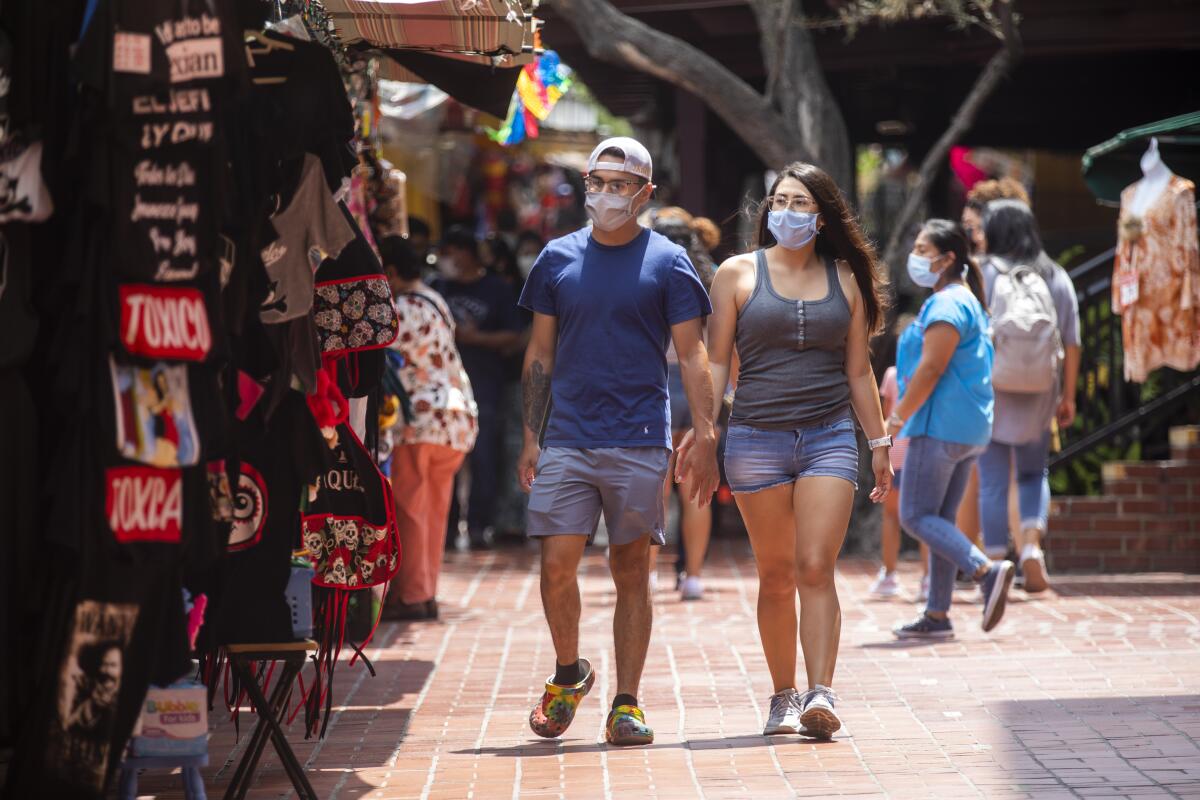Editorial: Mask confusion: The CDC and L.A. County offer conflicting guidance. Who’s right?

- Share via
Two weeks after the state lifted the mask mandate, Los Angeles County public health officials recommended that everyone put one back on when they enter movie theaters, grocery stores and other public places, even if they are fully vaccinated. Though COVID-19 cases in the county are still very low, they have been ticking upward exponentially in recent days, driven by the highly infectious Delta variant.
But on Wednesday, the Centers for Disease Control and Prevention appeared to pour cold water on that guidance. In an interview on “Today,” Director Rochelle Walensky said that vaccinated people are safe from the Delta variant and confirmed that the CDC maintains its position that vaccinated people don’t need to wear masks indoors.
To confuse matters even more, the World Health Organization sides with L.A. County. But individual experts, counties and states are divided on whether to advise vaccinated people to resume mask wearing. Some say it’s better to be safe than sorry. Others that the risk is too low to change course.
So ... who’s right here? Well, both, kind of.
The CDC is correct that people who are fully inoculated against COVID-19 don’t need to wear masks, at least not for their own sakes. The risk of infection among vaccinated people is extremely low, and it’s rarer still for these “breakthrough” infections to result in serious illness or death. For example, of the 123 cases of the Delta variant identified in Los Angeles County between April 21 and June 12, just 10 were among vaccinated people. And among those cases, none resulted in hospitalization or death. Overall, 99.6% of the cases and 99.8% of the COVID-19 deaths in Los Angeles County since December 2020 have been among unvaccinated people.
So there’s little risk out there to vaccinated people. But there is still a possibility, however remote, that they can transmit the infection to unvaccinated people. And local public health officials are right to be concerned about the increase in cases and look for ways to stop infections. In fact, it’s their job to do so.
But let’s be real here. At this point, COVID-19 is a pandemic for unvaccinated people, who, by the way, are still under a state mandate to wear masks in public places.
And while it can’t hurt to ask, even if all vaccinated people masked up from here on out for the greater good, it’s not likely to have much effect on transmission one way or the other. That will require significantly more people to take action for the good of themselves and walk into their local pharmacy and get a shot on the spot.
From the beginning of the pandemic, the public has received confusing messages from experts and policymakers on masks. That mixed messaging sowed division among partisans and turned this simple infection control measure into a political symbol that some are still fighting over. It’d be a shame to feed more fodder to that ridiculous debate.
More to Read
A cure for the common opinion
Get thought-provoking perspectives with our weekly newsletter.
You may occasionally receive promotional content from the Los Angeles Times.










